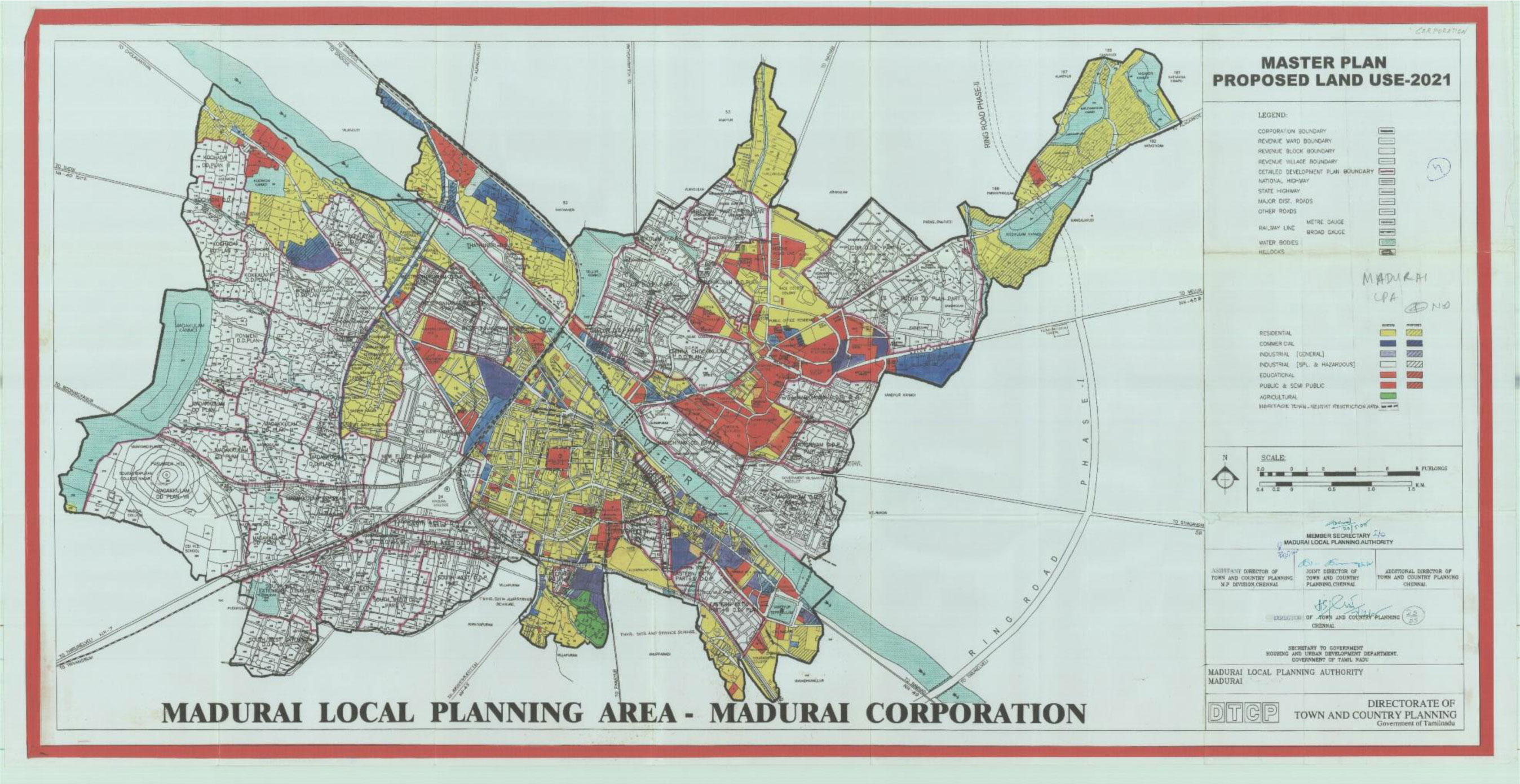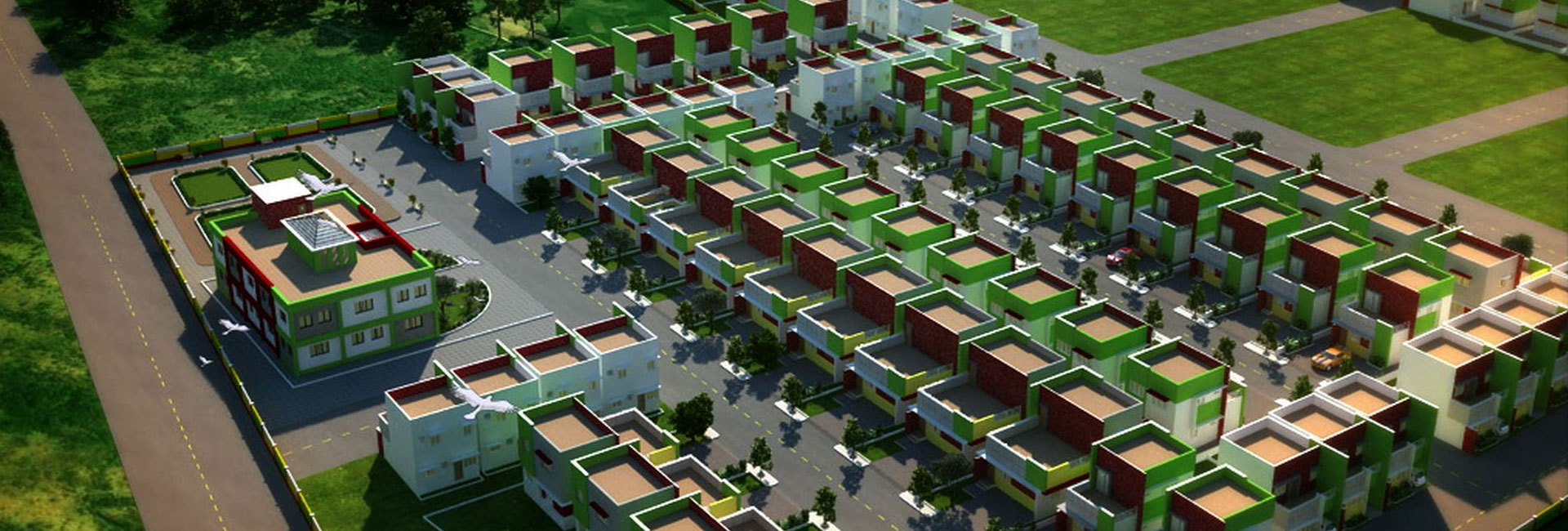Master Plan
- Home
- About Departments
- DTCP
- Master Plan
The Master plan is a development plan that provides a guideline for future growth of town in a sustainable way over a plan period of 20 to 30 years. In Tamil Nadu Master Plan is prepared with the legislative support of Tamil Nadu Town and Country planning Act 1971. The Master plan includes analysis, recommendations, and proposals for a town’s economy, housing, transportation, physical infrastructure, social infrastructure. It is based on public input, surveys, planning initiatives, existing development, physical characteristics, and social and economic conditions. Finally the proposed Land use map is prepared on the basis of future requirements and proposals.
The Directorate of Town and Country Planning has prepared 123 master plans (out of this 123 master plans 12 were merged with 111 Master plans) covering 162 urban local bodies (ULB’s) in the state. Presently DTCP is in the process of preparing GIS based Master Plan for 135 towns (111 review Master plan and 24 new Master plan). In Tamil Nadu existing planning area is 7% of the total state area (1, 30,060 sq.km) which is being increased to 22%.
Master Plan Preparation Process
Planning is a continuous process that facilitates updating and revision of the existing Master Plan due to the ever changing dynamics of the city and its region. It also provides an opportunity to undertake mid-course corrections and incorporate policy changes, if any, arising out of the needs of the population and its activities. The Master Plan is formulated on the basis of certain assumptions related to the present administrative set up, growth rates, household size, present policies, orders and guidelines with respect to urban development, transportation planning etc., which are liable to be modified as per the State policies.
Timeline for preparation and sanction of Master Plans

The Basic Characteristics of a Master Plan
First, it is a physical plan. Although a reflection of social and economic values, the plan is fundamentally a guide to the physical development of the community. It translates values into a scheme that describes how, why, when, and where to build, rebuild, or preserve the community.
A second characteristic is that it is long-range, covering a time period greater than one year, usually five years or more. A third characteristic of a general development plan is that it is comprehensive. It covers the entire city geographically – not merely one or more sections. It also includes all the functions that make a community work, such as transportation, housing, land use, utility systems, and recreation. Moreover, the plan considers the interrelationships of functions.
The Basic Characteristics of a Master Plan
- It’s physical.
- It’s long-range.
- It’s comprehensive.
- It’s a guide to decision making.
- It’s a statement of public policy.
Finally, the master plan is a guide to decision-making for the planning board, the governing board and mayor or manager. Another important characteristic of the master plan is that it is a statement of public policy. The plan translates community values, desires, and visions into land use and development principles that can guide the future growth of your community. The policies of the plan provide the basis upon which public decisions can be made.


Footer 1
Contact
- Second, Third and Fourth floor, E & C Market Road, Koyambedu, Chennai - 600 107.
- ctcptn@tn.gov.in
Footer Bottom
Copyright ©2024 The Department of Housing and Urban Development of state of Tamil Nadu


